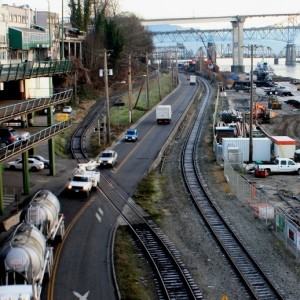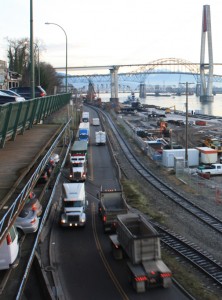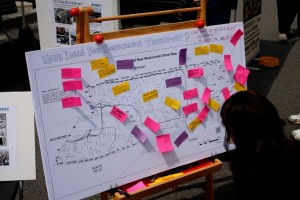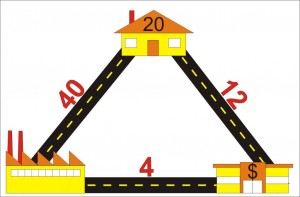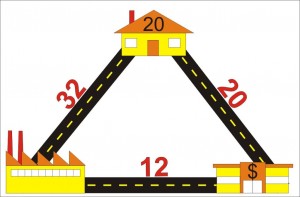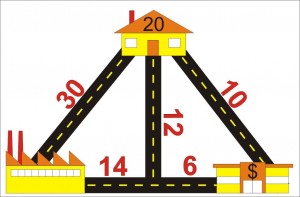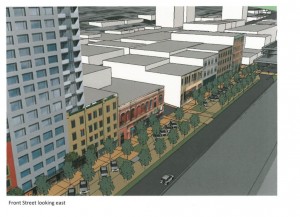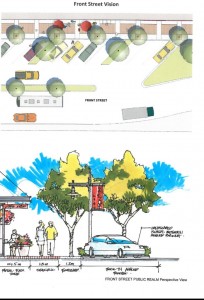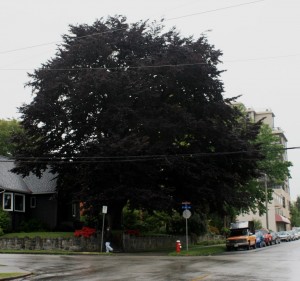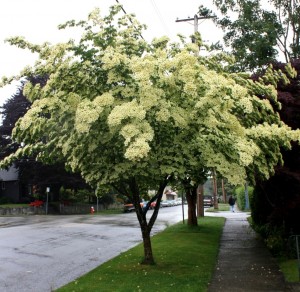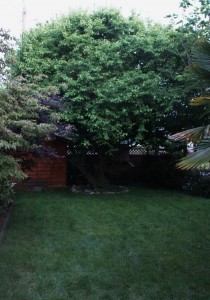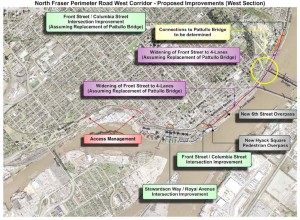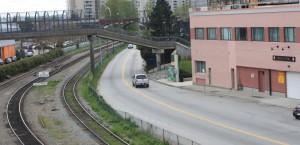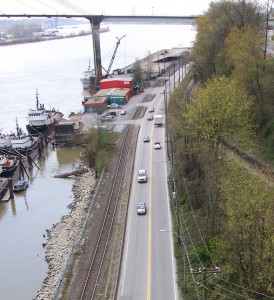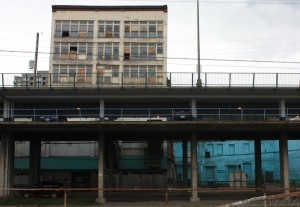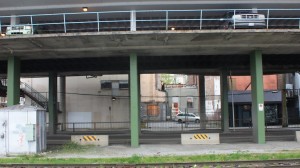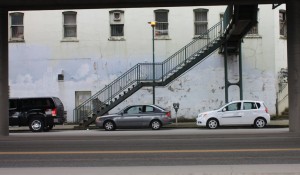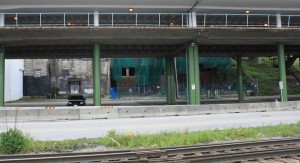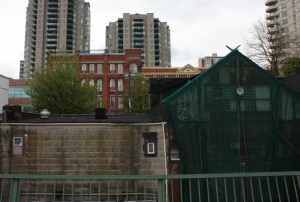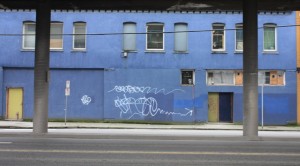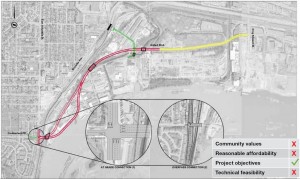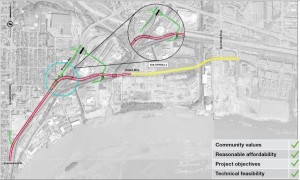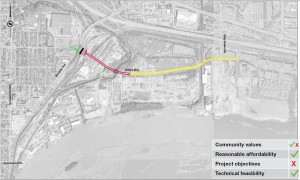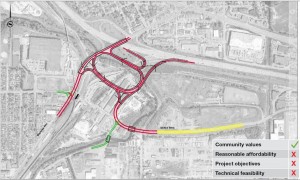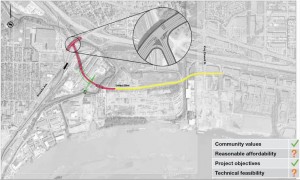I don’t think anyone other than TransLink wasted more bits of information or wrote more column-inches of text on the UBE process than I did. For those with short memories, the issue to me was very clear: why waste >$150 million on an overpass to take traffic pressure off of Coquitlam at the expense of putting more traffic pressure on New Westminster and serious disruption of the lives of hundreds of Sapperton residents. Simply put: it just wasn’t on. The people spoke, the City and TransLink listened.
Now, for some bizarre reason, one of the candidates for Mayor wants to re-open the issue. I can’t believe I have to write this post.
During this election, there are many candidates complaining about traffic, even the current Chair of the Traffic Committee outlined a long list of traffic woes in the City, suggesting somebody has to do something (without acknowledging that for the last 3 years, that somebody was him). Lots of complaints, not too many ideas. The only thing worse than no ideas are really bad ideas.
So desperate for new ideas are we that the biggest cheer at the Queens Park Residents Association All-Candidates gaggle ‘ n’ weep went to outsider Mayoral Candidate Francois Nantel, for suggesting his first priority as Mayor would be to remove the offending sidewalk bulge at 6th and Royal so he can beat the queue when trying to turn up the hill. This was, unfortunately, an example of how common sense is usually wrong.
The prospective mayor apparently didn’t realize that bulge serves at least three purposes:
1) It makes the crossing of Royal Ave easier for pedestrians. It is a high-traffic street and it is very wide (4 travel lanes, 2 parking lanes, plus a significant island/boulevard). Pedestrians crossing that street, especially those with mobility issues, need a lot of time to cross that much space. By shortening their distance, we make it safer and more comfortable for pedestrians, and it allows us to shorten the amount of time the red light is lit for the crossing traffic, allowing more traffic to flow through the intersection.
2) It narrows the road with a safe obstacle, which serves to slow traffic so it runs closer to the speed limit. Wide, open roads equal fast speeds. By introducing highly visible narrowing of the road, the perception of speed increases, ,and traffic slows down. This is why you fell comfortable going 50kmh over the speed limit coming down the hill from Gaglardi Way (a road with a 60km/h speed limit built for 100km/h), yet rarely find yourself speeding through the Deas tunnel. Royal is wide and open and looks like it can accommodate 80km/h traffic, but has a speed limit of 50km/h. The bump helps keep the traffic down to 70km/h.
3) The bump stops rat runners. Those people who get off of arterial routes like Royal and bomb through Queens Park and the Brow of the hill and the west End, using our neighbourhood streets to commute through. When traffic is backed up on Royal, they are looking for any escape route. If they can pass a line of 8 cars and turn right up 6th, they will take the next opportunity to turn left: Queens, Third, Fourth, any street to get them back to Stewardson. If they have to wait until the line of cars in front of them has cleared the intersection, they are way more likely to just go straight through and remain on the arterial route.
So sorry you have to wait an extra 30 seconds to turn up 6th in rush hour, Francois, but rest assured, there are good reasons for it. Thanks for pointing out one of the difficulties of designing traffic systems: everyone hates when their access to open road space is fettered, and everyone hates when everyone else’s access to road space close to where they live is unfettered.
Even fraught with all of those details, this idea is pretty minor compared to the Grand Plan 4 McBride outlined by Mayoral Challenger James Crosty. According to an expansive profile in the Record today,
“he’s already working with some Burnaby councillors who want discussions about the Stormont connector reopened and wants to talk to Coquitlam about the United Boulevard extension.”
I remember James as an early proponent of the “T-option” for the UBE, one that the people of Sapperton would simply not accept, was more expensive that the other options, and was of questionable value for “getting traffic moving” as it included a set of lights and 90-degree turn on a major truck route. Mostly, TransLink could not convince the people of New Westminster that adding more lanes to our border without addressing the traffic needs of New Westminster was not something New Westminster was going to accept. Despite all of the boo-birds saying it was a done deal and that the current Council had signed secret deals, etc.; in the end, Council listened to the people, took a principled stand, and stood up against the pressure form the senior and neighbouring governments. The death of the UBE was a major success for this Council.
I cannot fathom why Crosty wants to bring the UBE back now. He was at some of the consultation meetings; according to his own selective memory, he led the charge against the UBE (a dubious claim; His role was once described to me by a Sapperton friend as “waiting around to see which way the crowd was going, then rushing to the front just when we arrived, to provide the illusion he was leading all the way”). However, suggesting we open that can of worms, and topping it with opening a bigger can of Stormont Connector worms, suggests to me he did not learn from the UBE consultation process at all.
??
?
 |
| reference: this is a copy and paste from Citizen Chat, Volume 1, Issue 1. Which may contian an unreferenced image from TransLink. |
? ?? Mr. Crosty’s campaign newspaper has, as the centre piece of his Transportation Policy, this statement:
“People will always seek the fastest way from Point A to Point B. I would resolve to focus on the replacement of the Patullo [sic] Bridge. This would connect with a proposed covered thoroughfare which is currently McBride Avenue [sic]. The newly enclosed highway will emerge at the new Stormont Connector, taking vehicles straight into Burnaby and access to Hhy. #1.”
OK, first off, I agree with the first statement; In fact that is what I have been saying all along. The problem is, people want to solve the infrastructure capacity and livability problem of 400,000 vehicles per day passing through New Westminster right now by making New West the fastest point between points A and B. How does that not just make more people use New West as a drive-thru?
The natural corollary is that people will avoid the slowest route between Points A and B. With the South Fraser Perimeter Road and the Highway 1 Expansion: doesn’t that mean we can avoid increasing to our traffic woes just by being the only route without a freeway?
I’ve heard Mr. Crosty suggest the Cut’n’Cover McBride Avenue Boulevard idea before, and he has never been able to answer several questions for me. Primarily, who is currently lining up to spend the > $1 Billion it would cost to build a 2-km long, 4- or 6-lane covered roadway through a fully built-up community? Cut ‘n’ Cover often sounds cheap ‘n’ easy, but it is very far from that. Engineering a 5-m-deep trench over 2km is a major feat, involving the moving a freaky amount of fill, managing significant groundwater flow, and moving 100 years worth of sewer, water, gas, and communication utility infrastructure. Remember, this will need to be at least three times as wide as the Canada Line project on Cambie, with much more significant safety and escape structures, allowing that there will be cars in it and not sealed trains. Just expropriating enough land to build a couple of interchanges at 6th and/or 10th would be horrendously expensive. The idea boggles the mind. And just like Cassiar and Deas Tunnels, no placarded trucks would be allowed, so it would be of dubious value as a Truck Route.
McBride is part of the Major Road Network so I guess it would be up to TransLink to build and operate it, except of course, TransLink couldn’t scrape together enough money to build the order-of-magnitude less expensive UBE. I think TransLink has bigger regional priorities than relieving traffic on McBride Blvd right now.
Then there is the question of what the problem is this tunnel is meant to solve. The Billion Dollar Tunnel will connect the non-existent Stormont Connector to an unknown, potentially tolled, Pattullo bridge. I’m glad Mr. Crosty is talking to Burnaby Council Candidates, because I just don’t see Mayor Corrigan ploughing down a hundred homes and a kilometre of forest, disrupting the lives of thousands of East Burnaby residents, just to relieve New Westminster of a little traffic. Corrigan went nuts over the Hwy 1 Expansion and voted against funding the Evergreen… I don’t imagine his is willing to spend the hundreds of millions of dollars required to make it easier for Surreyites to get to Highway 1. But hey, maybe I’m being negative.
If we accept that transportation (with it’s ugly little brother traffic) is the biggest issue in the Election. I think Jonathan Cote (who actually understands the municipal role in sustainable transportation planning) and Chuck Puchmayr (who provided the most logical answer to transportation questions at the recent all-candidates event) have made the strongest cases for election.
